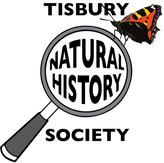|
Juniper scrub prospers well on rocky screes, exposed to the light, away from heavy grazing activity. Matt Pitts, Meadows Adviser at the Salisbury-based environmental charity Plantlife, showed us striking photographs of sites in Cumbria and the Caledonian forest where juniper growth has persisted since the last Ice Age. Closer to home we heard about Plantlife’s project in the Wylye Valley and the Chilterns where they are regenerating juniper on chalkland downs. Not only will this conserve the habitats for the 50 species of insects and 40 of fungi which solely rely on juniper, but it will also contribute to the biodiversity of species on these sites.
Historical records of land usage show that juniper started to disappear when the downlands were fenced and the shift in grazing patterns caused an impact, with some land also being lost to arable, particularly after the Napoleonic War and World War II. Despite this, Juniper went through a mini regeneration during the myxomatosis period 1960-80 as it no longer had the threat of thousands of rabbits nibbling its young shoots. We learned a striking fact that the berries have a low fertility with only 1-5% viability, so gathering viable seed is difficult. The Juniper project team is aided by the Millenium Seedbank which stores seed and checks on viability. Plantlife mainly use two methods of cultivation: they grow from seed and store young plants in a nursery for several years until they are strong enough for planting out and they also scatter seed on prepared scrapes of chalkland. Locally they have extensive scrapes on the Fonthill Estate in the Wylye Valley where they are trialling juniper regeneration. Patience is definitely required because juniper takes a long time to establish. We saw photographs of a scraped chalk fenced area over a ten year period and only by year 3 were tiny shoots in evidence. By year 10 there were 688 clumps of juniper growing well, with a multitude of chalkland orchids, kidney vetch and other flowers naturally seeded. Matt advised against buying juniper from nurseries because firstly, it might not be a native plant and secondly it could be infected with phytophthora austrocedi, a pathogen which kills our native juniper trees. This fungus-like pathogen is difficult to detect without proper laboratory investigation and it is likely to be carried in the compost, so to preserve the strength and integrity of our native juniper we better leave the juniper regeneration to the specialists. More information about Plantlife’s juniper project is available on their website. Comments are closed.
|
Photo: Avocets (Izzy Fry)
The headers display photos taken by our members. Do get in touch via the Contact Form if you'd like to submit a photo for selection.
Archives
May 2024
Categories
All
|

 RSS Feed
RSS Feed